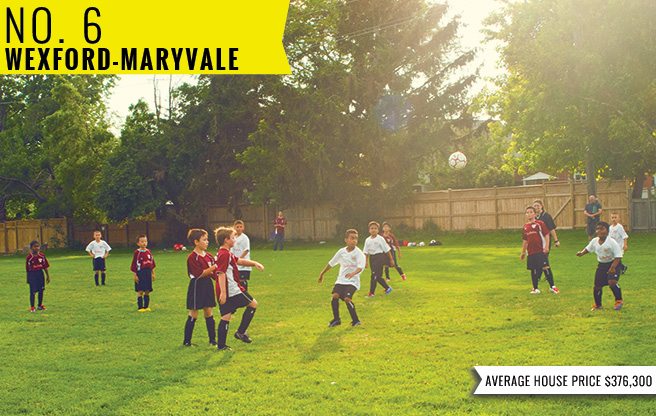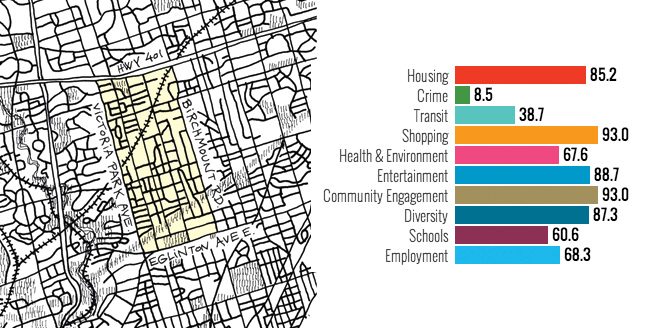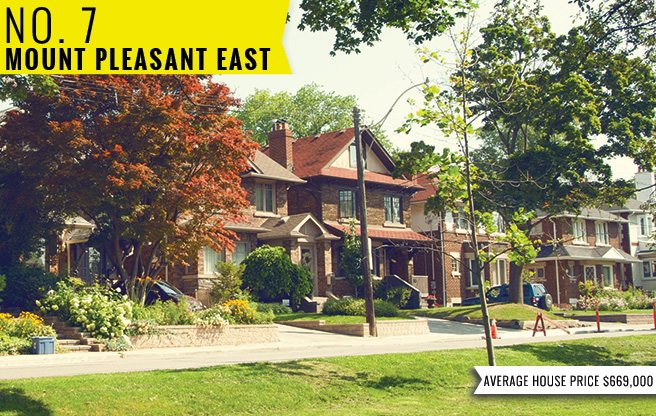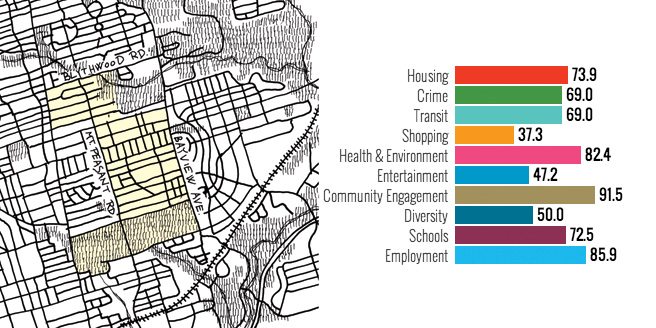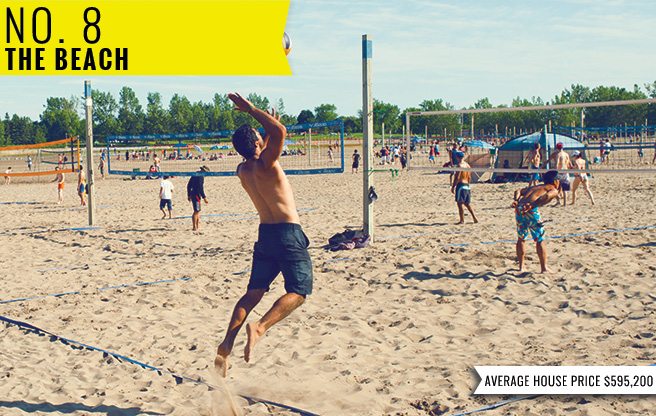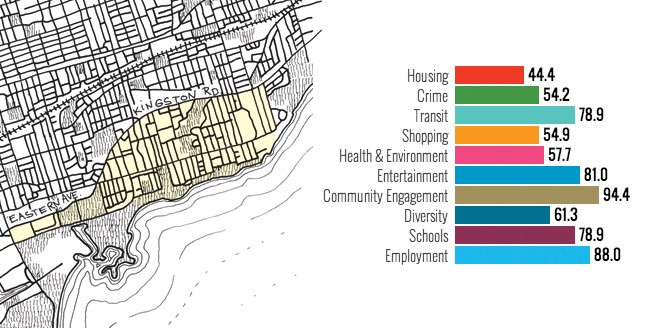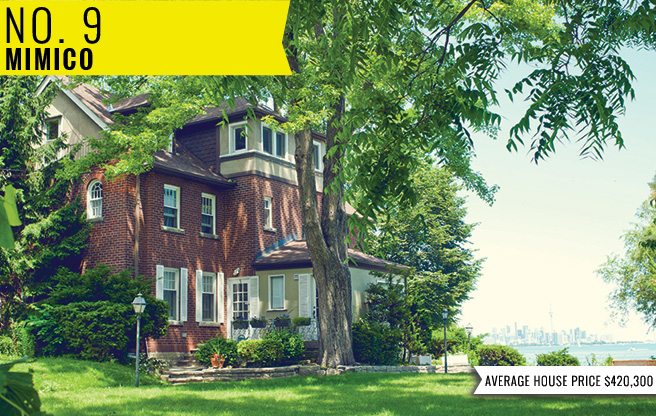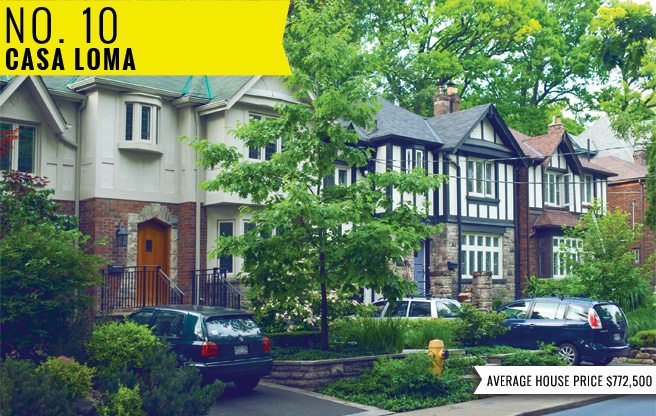The Eglinton LRT, dubbed “The Crosstown,” should be complete by 2020, running from Jane St. to Kennedy Station along Eglinton Avenue. (Courtesy of thecrosstown.ca) Dear Jimi Hendrix, we’re gearing up for The Crosstown traffic, but there are no plans for gridlock, or tire tracks of any kind.
We Torontonians are bracing ourselves for the big transit spend along Eglinton Ave. and it seems we may be getting our ducks in order.
In a May 17 article in the Globe and Mail by Richard Gilbert titled, “How Toronto’s transit plans take taxpayers for a ride,” potentially overwhelming future costs of the Eglinton LRT were supposed by the author.
Gilbert also offered some possible solutions to reduce the load on taxpayers. The most compelling? A four-fold increase in estimated ridership, reducing the subsidy per rider from $17.50 to $4.40.
How does Gilbert suggest the city increase ridership? By “encouraging massive development at and near the light-rail stations.”
Though people are clinging to car era logic, the reality of gas prices, traffic jams, and progressive urban planning are making downtown living increasingly attractive, especially for people who are tired of the commute.
While Toronto’s increase in the number of occupied units is not growing as fast as the rest of the GTA, the 2011 Census reports that 34.0 percent of the GTA’s increase in occupied dwelling units between 2006 and 2011 were in Toronto proper—a near two-fold improvement over the period between 2001 and 2006’s increase of 19.6 percent.
Your eyes can confirm what the census will tell you. Lots of that growth was from high-rise condos along the waterfront.
The question is, “where next?” The obvious answer is to connect new development to our transit plans.
Designed by Rosario Varacalli, E Condos will transform the Northeast corner of Yonge and Eglinton Avenue. (Courtesy of Baker Real Estate)
The Crosstown crossroads
Dear Robert Johnson, I went down to the crossroads, but I didn’t fall down on my knees, I actually took the elevator—to the subway.
The intersection of Yonge and Eglinton has always been a great location, but the imminent Eglinton LRT cements it as a new transit hub for Toronto.
The Northeast corner of said intersection is about to change dramatically. Developers Bazis, Metropia and RioCan are building 889 condominium units at Eight Eglinton Ave. E.
The project, called E Condos, will be the tallest constituent of the neighbourhood so far, with one tower rising 64 stories above street level, and the other 38.
Residents will be able to connect to the subway directly, without feeling winter’s undesirable touch. The project itself is the beginning of Eglinton Avenue’s arrival as a future transit hub.
Swimmers will enjoy a stunning view from cantilevered pools on the 31st floor of both buildings. (Courtesy of Baker Real Estate)
The smallest units are 480 square-foot one-bedrooms, the largest 1220 two-bedrooms plus den. There are 15 typical plans and a few terraced and penthouse suites.
Two cantilevered swimming pools on the 31st floors of both buildings are one of the project’s most distinctive features.
Scheduled grand opening is later this summer, with occupancy anticipated in the fall of 2017.
Baker Real Estate will oversee the sales and marketing of E Condos. Baker’s annual sales were almost $2 billion last year, during which they sold around 4,000 condominiums. Baker has offices in Toronto, Florida, and Montreal. They also take Canadian real estate products to China, Russia, Hong Kong, and the United Arab Emirates.
We spoke to Baker Real Estate president Barbara Lawlor about who she thinks E Condos residents will be, given Toronto’s increasingly cosmopolitan character.
“I think there will be quite a mix of buyers at Yonge and Eglinton,” Lawlor says. Aside from first-time homebuyers who work downtown, who else will make up this mix?
According to Lawlor, baby boomers are “having tremendous impact already and it’s only just begun. Now they are approaching right-sizing their homes, they have the money to do it. They’re well situated.”
“They want the freedom of one-level living, the community security of condominium living, and luxury.”
Downsizing your home in your 60s is a lot easier than waiting until your 80s to simplify your lifestyle. Condo living doesn’t include many of the hassles of home ownership, such as garden upkeep, snow removal, and repairs.
Party lounge in e8 building at E Condos (Courtesy of Baker Real Estate
Location, transit proximity
E Condos is certainly designed with luxury living in mind, but its greatest selling point is location, and transit proximity. Transit-connected projects like E Condos are built with fewer parking spaces. The demand for parking is decreasing. According to Lawlor, this is another sign Toronto is maturing.
“The minute you land in a great cosmopolitan international city, the first thing you do is learn how to hail a cab or where the underground [subway] is. Toronto is starting to feel like that.”
Transit initiatives make the city more livable and attractive, and that is encouraging real estate investors, who are also having a considerable impact on Toronto’s housing market.
With the first quarter of 2012 performing very well, Toronto is still North America’s top real estate market. “[Canada] is a safe haven. It is conservative,” says Lawlor.
Lawlor, an Irish immigrant, recognizes that “people coming here from all over the world are grateful for the conservative economic reliability this country offers—and I’m one of them.”
Responding to fluctuations in Vancouver’s housing market she comments, “We are not our West Coast where prices have spiked and are probably not sustainable. Our pricing in Toronto has been on a very steady incline for the last 20 years with very few blips along the way and very few double digit increases.”
